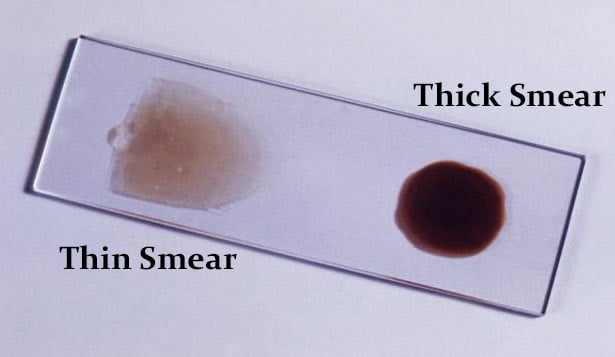1. | Thick blood smears are most useful for detecting the presence of parasites. | Thin blood smears helps to discover which species of parasite is causing the infection. |
2. | A thick blood smear is a drop of blood on a glass slide. | A thin blood smear is a drop of blood that is spread across a large area of the slide. |
3. | The blood films must be laked before or during staining to rupture all the RBC so that only WBC, platelets and parasites are visualized. | The purpose is to allow malarial parasites to be seen within the RBC and to assess the size of the infected RBCs compared to uninfected RBCs |
4. | Thick smears allow a more efficient detection of parasites (increased sensitivity 11 times than thin smear). | Less sensitive than a thick film especially where there is a low parasitemia. |
5. | It is not fixed in methanol. | It is fixed in methanol. |
6. | Thick smears are mainly used to detect infection and to estimate parasitemia. | Thin smears allow the examiner to identify malaria species, quantify parasitemia, and recognize parasite forms like schizonts and gametocytes. |


Do we need to look for the microfilaria using the microscope even after carrying out the blood smear?
why do we use distilled water in the thick blood smear instead of methanol?
Because water cause hemolysis of red blood cells by making it’s membrane fragile
To wash rbc
Because the thick smear is not fixed in methanol.
Why is thin film fixed in methanol?
In order to preserve morphology of red blood cells.
to prevent RBCs rupture when staining
Because its so small drop of blood
To make the smear adhere to the slide so that during staining process it should not be easily washed up
Because damage of parasite
How to identify microbes in blood smear for poultry other than parasites
Add organisms that can be identified by the 2 methods to the table
Good useful message. Kindly post the procedure of thick smear preparation
I’m doing M.S.in Niper mohali punjab . For detection of Animals blood components we use smear preparations
.is there any other stain for detection.?